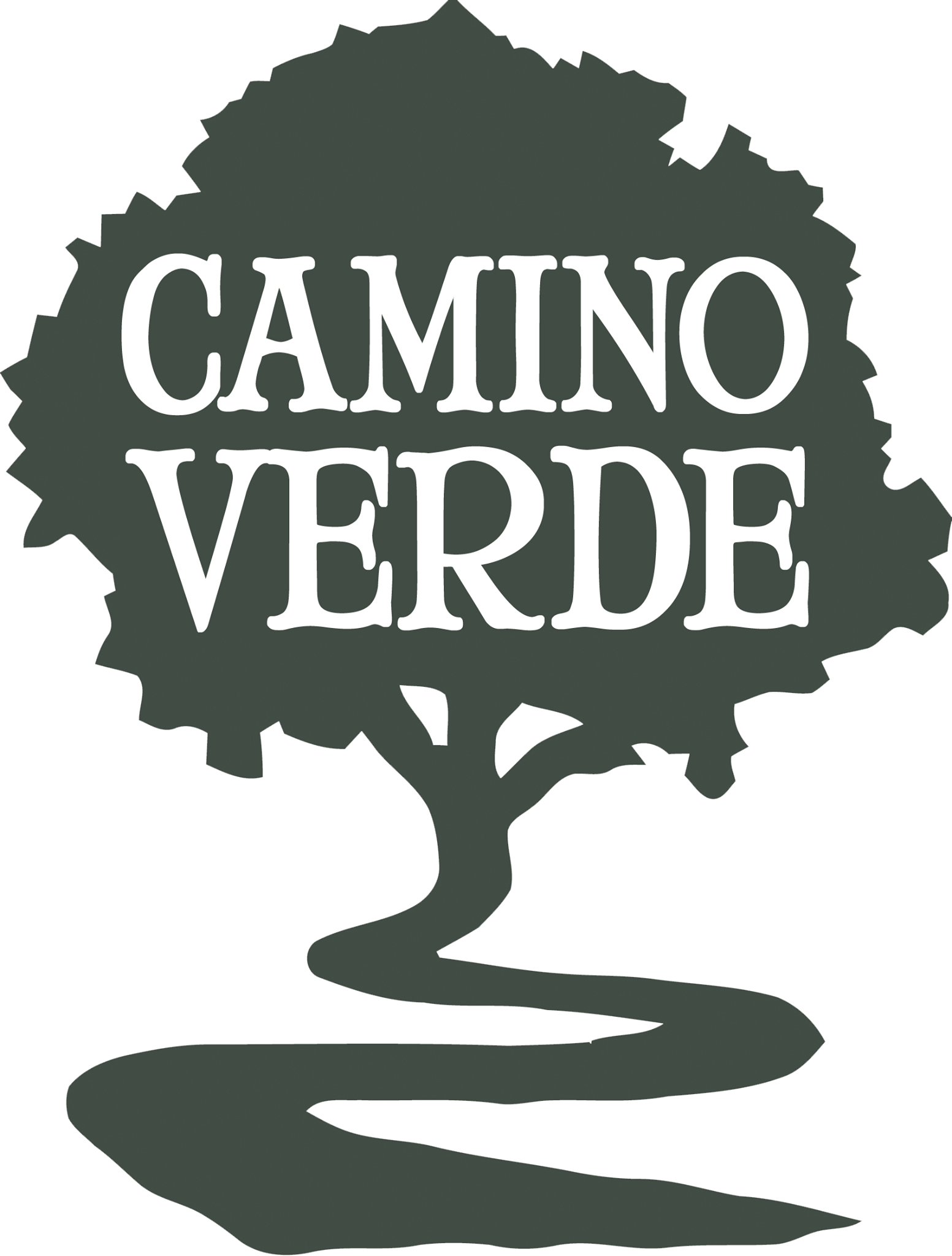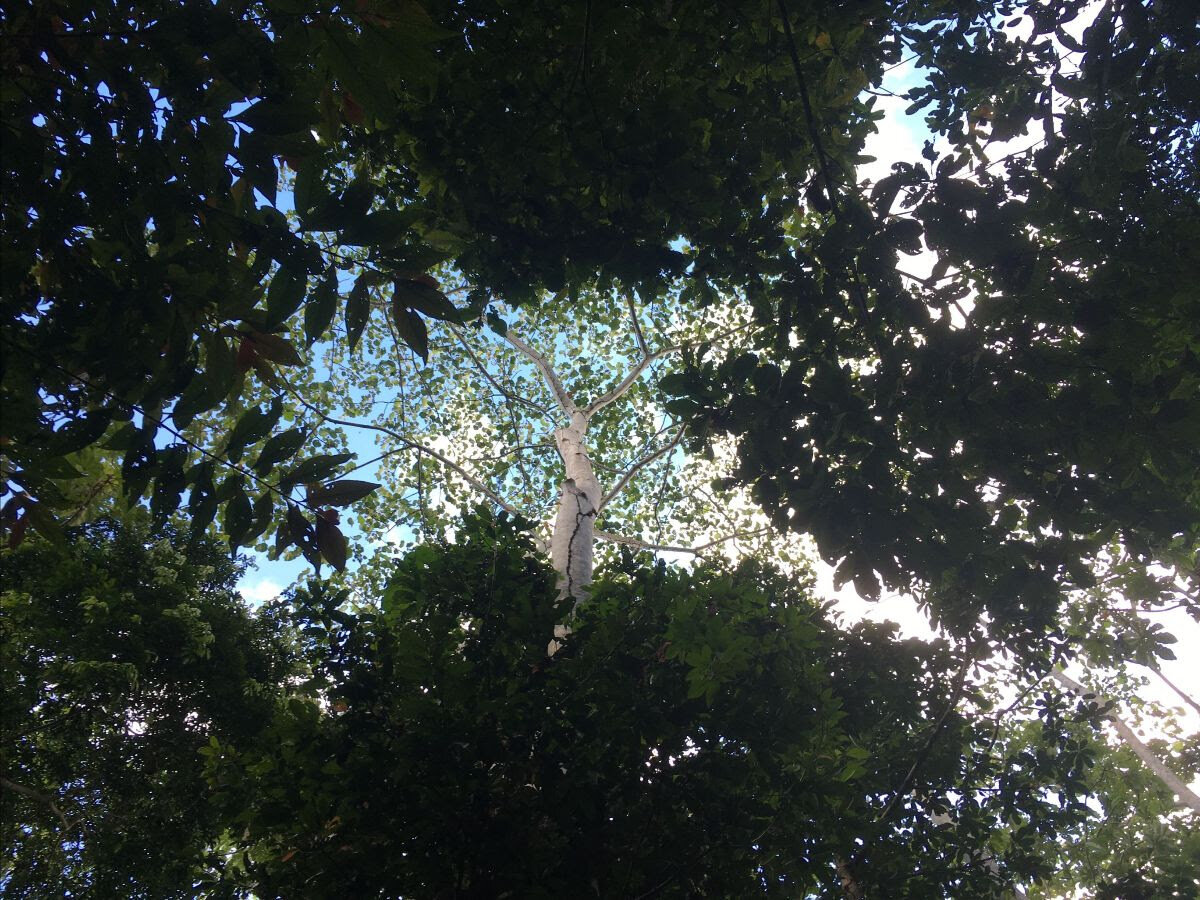Sublimity in the Amazon
images and text by Blair Butterfield, Camino Verde Communications Director
Arriving
There’s nothing like being completely ringed by primary forest, it hugs you with its warm breath, it surrounds you in an auditory landscape that attunes your primal senses, and it floods your olfactory, creating a memory so unique, it will be hard to recollect or describe it when you are back to your normal life.
Arriving to Camino Verde, via Peru’s many airports, I can’t help but think of the story of colonists coming to this country and delivering the violent fate that we all know. In the Lima airport, there are sky-high ads for designer brands, hanging like gods over your head. White, tall, emaciated models, you know the ones, the legacy of colonization still driving us to social and environmental depletion.
Going from Lima to Cusco to Puerto Maldonado airport, things began to get more humble in appearance. The Puerto Maldonado Airport is very small, a little dingy, and inoculated with the buzzing energy of its city. Walking out of the airport is like having someone breathe hot air onto your face. Palm trees sway in the background, the horizon is totally green and invites you to go with the flow. There are a myriad of men on small motor carts and motorcycles who offer you rides, their colors are vibrant, yellow jackets that you see swarming around the city like bees buzzing on a flowering bush.
Into the Jungle
But Puerto is not my final destination. I am greeted by Robin, my colleague and host, then we are driving to a rural area where we get out of the car and begin our walk through the jungle. We hike in further and further and the forest grows denser and denser. Robin has a machete that he uses to trim the path as we walk along; he occasionally turns to offer me crushed leaves of various species of plants to smell. We cross over spindly bodies of water via fallen trees, we tiptoe, shimmy, and balance trying not to slip and fall with our full bags on our backs. We pause for moments to observe unique mushrooms, beautiful flowers, strange insects, and I take various Polaroids to document our journey.
After about two hours of walking through the forest and smelling many different scents, we arrive to a river and to a boat, a small canoe-like vessel with a tiny motor. It is a relief to drop my bag, which contains a large scanner and photo equipment inside. We travel the river for what feels like an hour, moving across the water like a dried palm frond floating just on the surface. We putter against the deep and murky water surrounded on all sides by the unique ecotones of rusty colored mud, thick swaying clumps of golden grasses, giant tree crowns standing out of a blanket of bursting green canopies. The motor is loud, it is hard to hear anything, or to think, you just are.
Being Together
In Immanuel Kant’s Critique of Judgement, he attempts to define the concept of the sublime. One of his arguments draws out the difference between beauty –which is dependent upon an object and has bounds– versus that of the sublime, which has a quality of boundlessness. I find that I understand what he is trying to say when I bear witness to something that is much larger and more expansive than myself. (The concept of the sublime is an attempt to describe a human experience or emotion that arises out of us, and is not exclusive to those of us who happen to be concerned with philosophy!)
Perhaps it’s a feeling like when you’re sitting under a completely dark sky on a tributary of the Amazon River and you can see the dust of the Milky Way and the planets that surround us. We comprehend our mortality as a species – but see the mirror that reveals the vastness of our spirit. Winding our way along the river, amidst the tapestry of raw earth and all her transformations, it is almost palpable to feel the wisdom humans once had dissipating into the cosmos, lost forever.
We arrive at the Reforestation Center and we are greeted by Olivia. She is a strong, beautiful woman with long inky black hair. She wears mud boots and often carries a machete to clear footpaths. She later becomes a close companion during my visits, I will stay in her house, practice my Spanish with her, meet her family, she will teach me plant names, we will discuss intimate topics of being a woman, relationships, and our hopes for global change. But for now, she greets us on the banks and ties the boat up. We quickly drop our things in our stilt houses, strip down to our bathing suits or underwear and go swimming in the Tambopata River. It is silty and muddy, our feet sink down uncomfortably deep. The water is surprisingly cold even though it’s so hot outside.
Rewilding
For the rest of my visit, I mostly went without shoes, I wanted to be barefoot on the muddy earth, I allowed my skin to receive all the new additions to my localized ecology. To become integrated with the new environment, to rewild the body.
More guests arrived at the reforestation center including an olfactory artist and refined “nose” out of New York City. A distillation was made of moena alcanfór essential oil. We watched the distillation process for most of the day and when it was complete there was a bucket full of hydrosol. The olfactory artist introduces me to hydrosol bathing. We take the bucket near a huasaí tree (Euterpe precatoria), we strip down to our skin and we take turns pouring the moena hydrosol over each other‘s heads. We giggle like little girls as we take a shower in potent and magical botanical aromatics from the Amazon. That night we slept beautifully and both of us reported in the morning of wild and vivid dreams.
I spend my days collecting plant material, learning about trees, and walking around the forest. I feel like I quickly assimilate, and familiarize myself with the Reforestation Center’s various paths, planting projects, nurseries, rhythms of the day held by the team members, and when it is time to leave, my heart breaks. It breaks because this is such a magical place, it breaks because when I return to the United States I see there is a rigidity in our culture. It is fast-paced, there is a constant demand for production and to use our time efficiently. We do not take siestas, we do not take time to sit and socially share herbal tea or mate. It is not common for us to receive our neighbors unexpectedly at lunchtime, abandon the productivity of the day to share conversation and what is at our dining table.
Integrating the Experience
The saddest part is that this magical land is threatened, it is vulnerable, it is being extinguished by the demands of a global economy. Returning to the United States and seeing cacao, açaí berries, bananas, any tropical fruits or spices, reminds me of the critical status of the landscapes and people who produce these products. I ask myself, what native land was destroyed to produce this item for a mass market? Or, which of these items are supporting work being done to protect these places? I make choices to vote with my dollars, I vote to support my local farmers and product producers (I live in Vermont, so there are lots to choose from), and when I buy other products or ingredients, I vote for regenerative, ethical, and sustainable practices.
When I eat cocoa nibs I remember the fragile wild ecosystems that are full of magic, mythologies, dying languages, and I know I can make choices to help preserve and uplift these places and people so they do not become extinct.
Since soon after that first visit to the Reforestation Center, I am now the Communications Director for Camino Verde. That means it’s my job to bring the Amazon to life for people who might not have ever thought they were connected to it. It is a passion project that I contribute deep work, thoughtfulness, and time to with my entire heart. I hope this story might inspire you to spend more time barefoot, to let go stress, to vote with your dollars to support regeneration, to donate to Camino Verde’s work or maybe even visit the Reforestation Center yourself.
The Summer Day
Who made the world?
Who made the swan, and the black bear?
Who made the grasshopper?
This grasshopper, I mean—
the one who has flung herself out of the grass,
the one who is eating sugar out of my hand,
who is moving her jaws back and forth instead of up and down—
who is gazing around with her enormous and complicated eyes.
Now she lifts her pale forearms and thoroughly washes her face.
Now she snaps her wings open, and floats away.
I don't know exactly what a prayer is.
I do know how to pay attention, how to fall down
into the grass, how to kneel down in the grass,
how to be idle and blessed, how to stroll through the fields,
which is what I have been doing all day.
Tell me, what else should I have done?
Doesn't everything die at last, and too soon?
Tell me, what is it you plan to do
with your one wild and precious life?
—Mary Oliver
Blair Butterfield is the Communications Director and a CV board member. Her background spans from organic farming to fine art. She has led the development of urban sustainability projects in Miami with a focus on access to healthy food for underserved neighborhoods. As an environmental educator, she worked with schools to develop permaculture gardens for in-classroom learning and food resiliency. As a former board member of the Environmental Education Providers of Miami-Dade County she coordinated a network of organizations helping conserve the Everglades and Biscayne Bay. Her formal education is from Central Saint Martins London, the San Francisco Art Institute, and more recently she earned a unique MFA from the University of Hartford studying regenerative culture throughout the Americas. Her artistic work includes ethnographies of food systems and more recently, portraits of plants and their human stories – which can be seen on Camino Verde's website and social media outlets.









